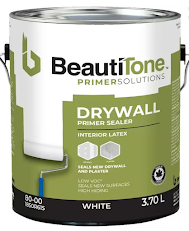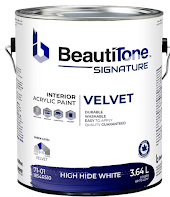December 11, 2024
Introduction:
Home painting requires knowing when to use each method. Picking the right paint is an important part of making that room look amazing. This page offers a wide variety of paint options. There are numerous paints available for sharing. Soon, you'll learn what paint you need and why. Understanding paint types and applications can help you choose the best product to improve the appearance and durability of different areas. Knowing this, you can choose the paint that best suits your home's style and needs.
Selecting the ideal painting type for a specific room can be even more challenging than choosing a colour you like. We will review all the different types of paint and how to pick the right one for that room.
 |
| What colour do I use? |
Different types of Paint
What Is Water-Based Paint? (And Why Is It So Popular?
Water-based paint, often called "latex paint," is the most common and popular type of paint used for both commercial and residential painting projects.
Unlike oil-based paints, its formula uses water as the primary solvent. This method has a number of distinctive advantages that make it a favourite for professionals and DIYers alike.
Key Benefits of Water-Based Paint
The main appeal of water-based paint comes down to its user-friendly and environmentally conscious features.
Rapid Drying Time: It dries much faster than oil-based options, allowing you to apply second coats sooner.
Easy Cleanup: No harsh chemicals needed. You can easily clean brushes, rollers, and spills with just soap and water.
Low VOCs: It releases a very low amount of volatile organic compounds (VOCs), which means less odour and better indoor air quality.
The Eco-Friendly Choice for a Modern Finish
Because of these beneficial qualities, a rising number of environmentally conscious people are gravitating toward water-based paint.
In the past, some painters preferred oil-based paints for their finish. However, modern enhancements in formulation have dramatically increased the durability and finish quality of water-based options, making it a reliable and high-quality choice for a wide range of applications and surfaces
What Is Oil-Based Paint? (And When Should You Use It?)
Oil-based paint, often referred to as alkyd paint, is a type of paint renowned for its heavy-duty durability and a tough, smooth, enamel-like finish.
While water-based paints have become more popular, oil-based paint remains the go-to choice for specific high-impact jobs where longevity and a flawless finish are the top priorities.
The Pros and Cons of Oil-Based Paint
Understanding the trade-offs of oil-based paint is key to a successful project.
Advantages:
Exceptional Durability: It creates a rigid, non-porous shell that is highly resistant to scuffs, stains, and wear.
Smooth, Levelling Finish: The paint's longer open time allows it to "level out," meaning brush strokes often disappear as it dries.
Superior Adhesion: It can adhere well to challenging surfaces, including metal or surfaces previously painted with oil-based paint.
Disadvantages:
Longer Dry Time: It takes significantly longer to dry, often 8–24 hours before it's ready for a recoat.
Difficult Cleanup: Requires mineral spirits or paint thinner for cleanup. Soap and water will not work.
High VOCs & Strong Odour: It releases Volatile Organic Compounds (VOCs), which create a strong solvent smell and require good ventilation.
Prone to Yellowing: Over time, especially in areas with low light, white oil-based paint can develop a yellowish tint.
Best Uses for Oil-Based Paint
Given its characteristics, oil-based paint is the ideal choice for high-traffic or high-touch surfaces, including:
Kitchen Cabinets
Interior Doors and Trim
Baseboards and moulding
Handrails
Exterior Metal or Wood
What Is Acrylic Paint? A Complete Guide for Artists & Crafters
Acrylic paint is a versatile, fast-drying paint that is one of the most popular choices for artistic purposes. At its core, it's a type of water-based paint where the pigment is suspended in an acrylic polymer emulsion.
This modern formula gives it a unique combination of user-friendly cleanup and a durable, lasting finish, making it a favourite for everyone, from beginner painters to professional artists.
Key Features & Benefits of Acrylic Paint
The popularity of acrylics comes from a few distinct advantages:
Fast-Drying: Acrylic paint dries rapidly, often within minutes. This allows artists to easily apply multiple layers without muddying the colours.
Durable & Flexible: Once dry, acrylic paint forms a flexible, durable film. It is highly resistant to fading (lightfast) and is not prone to the cracking or breaking that can happen with oil paints.
Water-Soluble: When it's wet, acrylic paint is water-based. This means you can clean your brushes and any spills with just simple soap and water.
Versatile: It can be thinned with water to act like watercolour or applied in thick layers (impasto) to mimic oil paint.
Common Uses for Acrylic Paint
Although acrylic paint is most renowned for its use on canvas, its versatility makes it an excellent choice for a wide variety of artistic purposes.
Canvas painting
Wood crafts and signs
Fabric and T-shirt design
Ceramic and pottery painting
Mixed media art
Painting on glass or metal (with the proper primer)
What Is Enamel Paint? A Complete Guide
When you need a paint that can withstand serious wear and tear, the most common recommendation is "enamel paint." But what does that term actually mean?
Unlike "latex" or "oil-based," which describe a paint's solvent, "enamel" describes its properties. Enamel paint is any paint that dries to a tough, durable, and non-porous finish, similar to the "enamel" on a piece of pottery.
This is why your original definition is so common: the type of paint distinguished by its durable and glossy finish is called an enamel.
The Big Clarification: Oil-Based vs. Water-Based Enamel
This is the most confusing part for most people.
Traditionally, the term "enamel" was used exclusively for oil-based paints, which were the only ones that could create that super-hard finish.
Today: Modern technology has created water-based (acrylic) paints that can dry just as hard.
Now, you can buy both:
Water-Based Enamel (or Acrylic Enamel): Offers excellent durability with low VOCs, a fast dry time, and easy soap-and-water cleanup.
When to Use Enamel Paint
Enamel paint's rock-hard finish makes it the perfect choice for any surface that experiences frequent touch or abuse. This is why cabinets, doors, and trim are the most common applications for this material.
Use enamel paint for:
Kitchen and bathroom cabinets
Interior and exterior doors
All types of trim (baseboards, window sills, crown moulding)
High-traffic furniture (chairs, tables)
Metal railings
What Is Chalk Paint? A Beginner's Guide to Easy Furniture Painting
Chalk paint (or "chalk-finish paint") is a specific type of decorative paint that has become incredibly popular for its ultra-matte finish and remarkable ease of use.
If you have seen projects involving "upcycled" furniture and other ornamental elements, those projects frequently make use of chalk paint. Its formula is designed to be simple to apply, making it a favourite among DIYers and beginners.
Key Features of Chalk Paint
Chalk paint's unique properties set it apart from all other paint types.
The "No-Prep" Advantage: Its biggest selling point is its incredible adhesion. In most cases, you do not need to sand or prime your piece before painting. It sticks directly to finished wood, laminate, metal, and glass.
Ultra-Matte Finish: As the name "chalk" suggests, it dries to a soft, velvety, non-reflective finish. This is excellent for hiding imperfections in older furniture.
Perfect for "Distressing": The paint is soft and easy to sand, making it the perfect choice for creating a "shabby chic," "farmhouse," or "distressed" antique look.
Fast-Drying & Low-VOC: Like latex, it's water-based, so it dries quickly and has a low odour and easy cleanup.
The Most Important Step: Sealing Chalk Paint
Because chalk paint is porous and has a soft finish, it is not durable on its own. To protect your project from stains and scratches, you must apply a top coat.
The two most common methods are
Furniture Wax: This is the traditional method. It's rubbed on to create a soft, hand-buffed sheen and provides water resistance.
Clear Coat (Polycrylic): A water-based clear coat is easier to apply and provides a more durable, wipeable finish, ideal for high-traffic items like tabletops or cabinets.
What Is Metallic Paint? Your Guide to a Flawless Shimmering Finish
Metallic paint is a specialty decorative finish designed for high-impact visual appeal. You can achieve a striking metallic or shimmering sheen by adding fine metallic pigments (like aluminium or mica flakes) to the paint base. These tiny flakes reflect light, creating a unique, multi-dimensional finish.
Due to this visual power, there are numerous applications for ornamental and accent walls.
Key Features of Metallic Paint
Metallic paints have unique characteristics that differentiate them from standard flat or gloss paints:
Light Reflection: The reflective pigments cause the colour to shift depending on the angle of the light, adding depth to any room.
Versatile Hues: Available in traditional metal colours (gold, silver, copper, and bronze) as well as iridescent pearl and specialty multi-colour shimmers.
Low-VOC: Most modern metallic paints are water-based (acrylic), offering easy cleanup and minimal odour.
The #1 Tip: Essential Application for No-Streak Results
The biggest mistake with metallic paint is applying it incorrectly, which highlights roller marks and streaks. Here’s the key to a professional finish:
Use a Base Coat: Apply a matte paint in a colour similar to your metallic shade (e.g., a dark brown under a bronze metallic). This helps hide any thin spots and keeps the finish uniform.
Use the Right Tool: A high-quality foam roller or a dedicated metallic paint roller is often recommended over standard nap rollers to reduce texture and streaking.
Maintain a Wet Edge: Work quickly and consistently from top to bottom on your accent wall. Do not let any section dry before overlapping it with the next section, which prevents lines.
What Is Milk Paint? The Traditional, Non-Toxic Furniture Finish
Milk paint is one of the oldest and most natural paint formulas, dating back hundreds of years. This type of paint is known for its deep, matte finish and a flat appearance with a slight texture.
Unlike modern liquid paints, milk paint is traditionally sold as a powder and is composed of five simple, natural ingredients: casein protein (from milk), lime, clay, and natural pigments.
Key Benefits for DIY and Furniture
The unique formulation of milk paint is what makes it so appealing to crafters and restorers:
Non-Toxic and Zero-VOC: It is considered one of the safest paints available, making it ideal for baby furniture, cribs, and kitchens.
Historical Colour Saturation: The natural pigments provide a unique depth and richness of colour that is difficult to replicate with synthetic formulas.
Easy Cleanup: Since it's water-based, brushes and spills are simple to clean with water.
Best Uses for Milk Paint
While historically used in general construction, milk paint today is primarily used for specific decorative projects:
Antique and Vintage Furniture (The primary uses)
Kitchen and Pantry Cabinets
Wood Crafts and Picture Frames
Children's furniture and toys are made from non-toxic materials.
What Is Paint Primer? Your Essential Guide to a Lasting Finish
Primer is a specific type of paint that serves as an essential foundation, preparing surfaces for painting. Unlike regular paint, primer contains a higher concentration of binding resins and lower pigment, optimizing it for maximum grip.
The use of primer is essential in the painting process because it directly enhances the overall appearance and ensures that subsequent layers of paint adhere properly. This foundational step ultimately contributes to the longevity and durability of the entire paint job.
The Foundational Role of Primer (Why It's Essential)
Adhesion: Primer acts as the crucial glue, drastically improving the topcoat's ability to adhere to smooth, glossy, or difficult surfaces.
Sealing: It locks down porous surfaces (like new drywall, bare wood, or masonry), preventing the topcoat from being absorbed unevenly and ensuring a smooth and even finish.
Blocking: Quality primers prevent stains (e.g., water, smoke, grease) or wood tannins (tannic acid) from bleeding through and ruining the final colour.
 |
| A house that is painted in many different colours |
Interior vs. Exterior:
- Interior: Use this type of paint on interior surfaces. It is often less durable than exterior paint and is susceptible to weather and UV damage. This feature means that while interior paint is designed for indoor use and may be easier to apply, it does not hold up as well against harsh conditions like sunlight and moisture compared to exterior paint. Thus, choosing the right paint for the environment is crucial.
- Exterior: Surfaces are the intended application for this paint. It lasts longer than interior paint and is resistant to weather, UV damage, and fading. Using exterior paint ensures that surfaces exposed to the elements remain protected and vibrant over time. This choice is essential for maintaining the integrity and appearance of outdoor structures.
Paint Finishes:
- Flat: This finish is devoid of shine and effectively conceals surface imperfections.
- Eggshell: This finish has a slight sheen and is simple to clean.
- Satin: This finish has a medium sheen and is durable and simple to clean.
- Semi-gloss: This finish has a high sheen and is very durable and simple to clean.
- Gloss: This finish has the highest sheen and is very durable and simple to clean.
Conclusion:
Select the proper paint finishes for the beauty as well as the performance of a space. Flat finishes provide a smooth, matte surface that helps mask surface imperfections in spaces that want an impermeable appearance. Then you go to an eggshell finish; there’s some sheen to it, some visual interest, and it’s also simple to clean—it's perfect for moderate-traffic areas. Satin finishes, on the other hand, strike a balance between aesthetic appeal and durability, offering a medium sheen that combines a pleasing elegance with sufficient resistance to daily wear and tear.
Finally, semi-gloss finishes add a designer touch with their bright reflection but are still simple to maintain and extremely durable, meaning they're the perfect choice for high-traffic areas or spaces that require regular cleaning. Having the option to compare the pros and cons of each system allows a homeowner to select what works best for them, resulting in an aesthetically pleasing end result that does not sacrifice practical attributes—providing desirable living quarters for many generations to come.
I sincerely hope this info helps you get a better grasp on the different types of paint! If you need any clarification, feel free to ask!
Why You Can Trust This Information
Experience: The insights in this article come from years of real, hands-on work in home maintenance, repairs, and troubleshooting common homeowner issues. Everything shared is based on practical situations—not theory.
Expertise: Each recommendation is grounded in proven home improvement practices, drawing on knowledge of how homes function, how materials behave, and how to prevent long-term problems before they start.
Authoritativeness: The guidance provided aligns with standards followed by professional contractors, inspectors, and tradespeople across the home improvement industry. These are reliable, time-tested methods used in real projects.
Trustworthiness: The information prioritizes safety, transparency, and empowering homeowners to make informed decisions. Every tip is intended to be clear, actionable, and genuinely beneficial for protecting and improving your home.
Regards,
Joseph F. Botelho
Ready for a Home Makeover?
Stop putting off those repairs! We specialize in expert painting and reliable handyman services right here in the area. From a fresh coat of paint to fixing those nagging household issues, we handle the hard work so you don't have to.
About the Author – JFB Handyman
JFB Painting and Handyman Services has been proudly serving homeowners since 2018, providing reliable, detail-focused home maintenance, repairs, and improvement services. With years of hands-on experience solving real foundation, soil, drainage, and structural issues, JFB Handyman brings practical knowledge to every project and every article.
From small fixes to complex home challenges, the goal has always been the same: deliver honest workmanship, protect your investment, and help homeowners understand how to keep their property in top condition. This commitment to quality, transparency, and long-term solutions has made JFB Handyman a trusted name in local home repair.



























